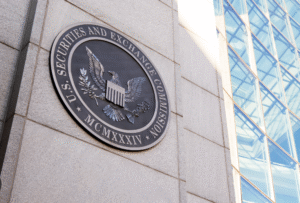$BTC $GLD $SPX
#Economy #Finance #Investing #Cryptocurrency #StockMarket #Inflation #Gold #Bitcoin #Markets #Wealth #Money #MonetaryPolicy
Dive into the depths of financial data, and you’ll encounter some staggering insights that signify profound implications for the global monetary system. By examining pivotal charts, one can draw unsettling conclusions: the underpinnings of this system may be amplifying wealth inequality, constraining economic growth, and accelerating asset inflation. Historically, monetary policy has played a crucial role in economic stability, yet recent trends suggest that the mechanisms designed to ensure prosperity are, in some cases, worsening systemic imbalances. The Federal Reserve’s extensive quantitative easing (QE) programs and cyclical low-interest-rate strategies have inflated asset prices disproportionately. As prices for equities such as $SPX surge, so does the gap between the asset-owning wealthy and those attempting to build savings in fiat terms.
Cryptocurrencies like $BTC have emerged as an alternative, particularly following the 2008 financial crisis. Born out of the need for a decentralized monetary system, Bitcoin represents a hedge against inflationary pressures and centralized financial systems that can falter under excess. Gold ($GLD), a longstanding safe-haven asset, has also seen a resurgence as investors seek stability amidst historically high debt-to-GDP ratios and fiat devaluation. What these alternatives underscore is a growing awareness: traditional monetary policies are failing to meet the needs of global citizens. For instance, purchasing power, as measured in fiat currencies like the U.S. Dollar, has eroded significantly since the transition away from the gold standard, a phenomenon best visualized through skyrocketing consumer prices and corresponding charts.
The equity markets—while driving returns for asset holders—further emphasize these disparities. The S&P 500 ($SPX), for example, has routinely outpaced wage growth and broader economic recovery metrics, signaling an economy increasingly detached from the broader population’s financial realities. This isn’t just about individual struggles—corporate debt has swelled to unprecedented levels due to prolonged low interest rates, presenting systemic risks for the financial system at large. If markets were to correct, it would disproportionately impact retail investors, including those participating in newer avenues like cryptocurrency markets. But this also reflects how investors are no longer confident in fiat’s stability, turning instead to what they perceive as tangible stores of value like $GLD, property, or even digital assets such as $BTC.
In the face of this turbulence, both retail and institutional investors are diversifying their portfolios. The growing trend toward hedging with Bitcoin and gold—rather than solely relying on the USD or government bonds—illustrates a lack of trust in the traditional financial system. Questions linger about whether monetary authorities can sustain the balance between inflation control and fostering prosperity without further exacerbating wealth inequality. The call for reform grows louder as data continues to shed light on the systemic flaws. The shift toward newer forms of assets and decentralized systems may signify the beginning of a broader recalibration of the global economy, where the rules of monetary engagement are redefined, potentially reshaping generational wealth strategies. The evidence, however, remains clear: the current monetary system shows cracks, and markets will have to adapt accordingly.









Comments are closed.